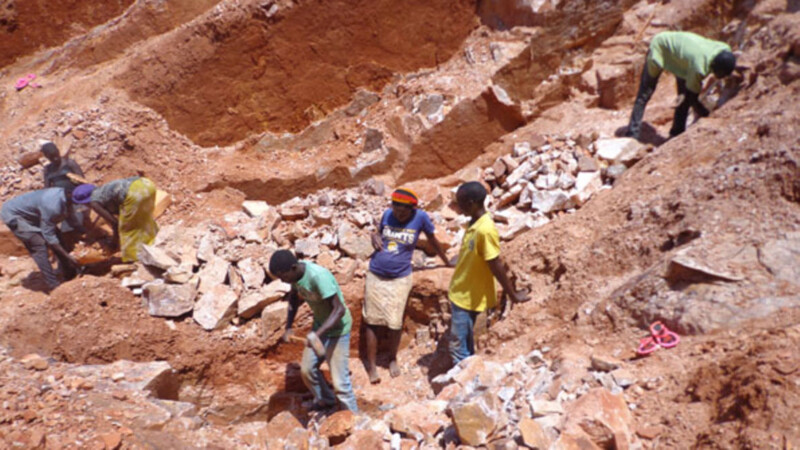BY Diane NIKUZE NKUSI
In the heart of Rwanda’s Central Province, Muhanga District is home to breathtaking landscapes and a community that relies heavily on natural resources, especially stones and gravel, for their livelihoods. However, a growing concern is emerging in this region illegal stone quarrying, which has not only become a source of income for many but is also taking a severe toll on public health.
In this article, we explore the destructive impact of illegal quarrying on the environment, the health of workers, and the surrounding community, through personal testimonies and interviews with local leaders in the mining sector.
The Rise of Illegal Quarrying
Illegal stone quarrying in Rwanda, particularly in Muhanga, has proliferated in recent years due to the rising demand for construction materials. Quarrying activities, especially those conducted informally, lack proper regulation and many workers are exposed to hazardous working conditions.
Despite efforts by the government to regulate the sector, many workers are compelled to continue their dangerous work due to limited job alternatives.
Testimonies from Survivors
Nduwamungu, a 36-year-old father of three, shares his experience working in the quarries: “I started working in the quarries to support my family, but I did not realize the toll it would take on my body. The dust from the stones would suffocate me and the physical labor left me in constant pain. Over time, I began to experience severe breathing problems and I could not work as efficiently. I’ve seen several people who have been injured or fallen ill, but we do not have any other way to make money.”
Her testimony reflects the broader problem faced by many quarry workers in the region. The constant exposure to dust and the harsh conditions have led to long-term respiratory issues, injuries from falling rocks, and musculoskeletal disorders, especially among those who work without any protective equipment.
Another survivor, Ruterana, a 42-year-old man who has worked in the quarries for over a decade, reveals the devastating effects on his health: “After years of working in these quarries, my chest became heavy and I developed a persistent cough. I’ve gone to the hospital, but they say it’s a condition caused by constant inhalation of dust. Many of us have similar issues. It’s too dangerous, but there’s no choice.”
Environmental and Public Health Impacts
The environmental consequences of illegal quarrying are equally alarming. Quarrying, particularly when conducted unsafely, can lead to deforestation, loss of biodiversity, and soil erosion.
In many instances, rivers and water sources near illegal quarries have been contaminated with debris, affecting local communities’ access to clean water. The lack of proper waste management further exacerbates the situation.
On the health front, the impact of illegal quarrying extends beyond the workers. Local residents living near quarry sites are also at risk of respiratory diseases, as fine stone dust becomes airborne and enters their lungs. Children who play outside near quarrying sites are especially vulnerable.
Industry Response
To understand the response from the leaders, we used an interview with the Chief Executive Officer (CEO) of the Rwanda Mines, Petroleum, and Gas Board (RMB), Francis Kamanzi, given to the media, where he emphasized the government’s efforts to address the issue of illegal quarrying:
“The government has put in place regulations to ensure safety in the mining and quarrying sectors. However, illegal quarrying remains a challenge because it is difficult to monitor and control. We encourage people to engage in legal, regulated quarrying practices that prioritize safety and environmental conservation.”
Kamanzi explained that the government is working to raise awareness among workers about the risks associated with illegal quarrying and the importance of following safety procedures. This includes providing personal protective equipment (PPE) and health screenings for workers in legal quarries.
The Way Forward
The issue of illegal stone quarrying is complex, with no simple solution. While government regulations aim to improve safety and environmental practices, illegal quarries continue to thrive due to poverty and the lack of viable alternative sources of income.
The role of the community is also crucial. Raising awareness about the health risks associated with illegal quarrying and educating people on safe and sustainable mining practices can help reduce the negative impact.
As Rwanda continues to grow, the health and safety of its workers and communities must be prioritized. The testimonies of individuals like Nduwamungu and Ruterana reveal the devastating toll that illegal stone quarrying takes on health.
While the government is making efforts to regulate the industry, more needs to be done to ensure the safety of workers and the sustainability of natural resources. By investing in legal and regulated quarrying practices and creating alternative livelihoods, Rwanda can protect both its people and its environment, ensuring a healthier future for all.





